A change of pace: How Fidelity International turned its equities desk around
The equities desk at Fidelity International (FIL) has had a frenetic few years following a major team revamp in 2017. We talk to the winners of the EMCA Best Equities Trading Desk about team spirit, team structure, and team autonomy. What makes this desk stand out from the crowd?
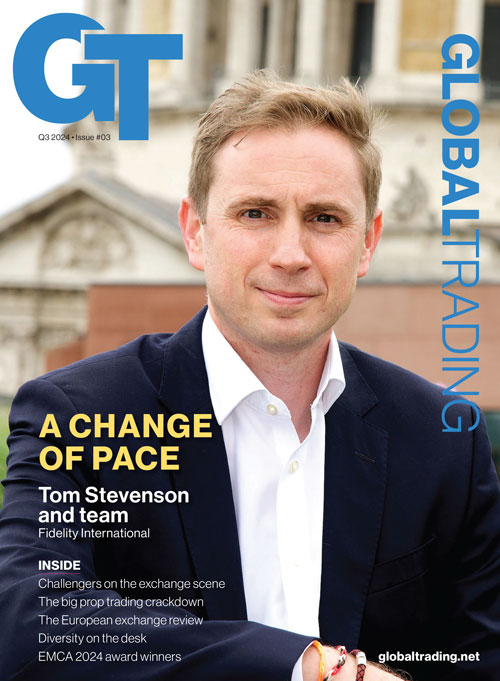 A decision to diversify
A decision to diversify
In 2017 a structural change saw the equities team begin an internal journey that would see it evolve into a very different animal. “We brought together a collection of people with a mix of different experiences and energies to try and take the team in a different direction,” said head of desk (and head of equity trading) Tom Stevenson, who has been with the firm for 18 years. “We wanted to be able to service our fund managers in a slightly different to way to how we had done previously, and that’s ultimately what we’ve been focusing on over the past seven years.”
The journey to achieve this has seen the desk bring in multiple resources from multiple routes – from sourcing internally to looking outwards, from bringing in sell-side expertise to leveraging trade support. The result is a diverse yet tight-knit team, all with very different strengths yet all pulling in the same direction.
The intention was to be able to work more closely with the investment team, and for the traders to be more integrated into the investment process – effectively to become the eyes and ears of the investment team. “Traders have access to a lot of unique information but we need to make sure we are actually using that information in an effective and efficient way,” said Stevenson. “You need the right people to be able to do that.”
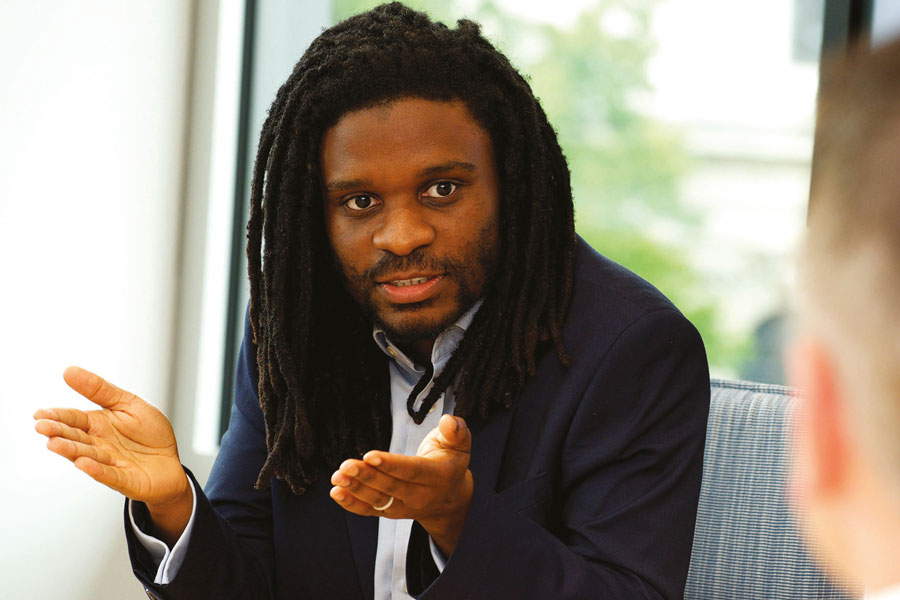
Meet the team
Equity trader Emmanuel Gbetuwa, who has been at Fidelity for 12 years, came on board from the support team. Having joined the firm straight from university, he had seen multiple aspects of the business before he joined the desk. “That really helped, as I was able to understand how things flow from the start of the trade all the way downstream to the accounting system, which was a positive addition to the experience already on the desk.”
Next came senior trader Tim Miller, who joined from Jefferies in October 2016, quickly followed by senior trader Georgina Flynn, who joined from Merrill Lynch, both bringing sell-side experience into the desk. Next was senior trader Grainne O’Connor, who came from Blue Crest Capital in 2018 to bring a hedge fund flavour to the desk. Equity trader Louise McCormack was an internal hire, promoted to trader during Covid, with Will Vaz joining in a desk support role at the same time. Equity trader Dominic Eccles, who joined the team in 2022, was the final piece of the puzzle.
“We have a pipeline of talent internally that we like to tap into,” explains Stevenson. “So we had three internal moves, two sell-side hires and two buy-side.”
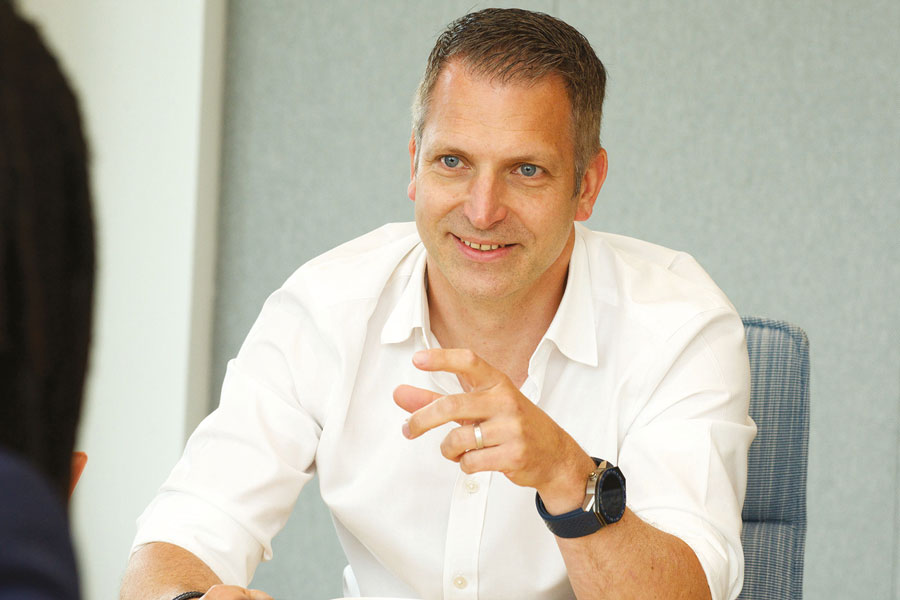
Tim Miller: Systematic integration
It’s not all been plain sailing, but the new team has big ambitions. One of the biggest changes has been a more efficient approach to the use of data – something that might sound standard but has actually been a sea-change.
Miller runs the systematic side of the desk, and his main focus now is looking at all trades which could be traded systematically to see where efficiency can be improved. “We look at performance both in pre- and post-trade data versus TCA, and we work really closely with our data teams to build an in-depth data source that we can then look at to improve and enhance our process. We use that to demonstrate to our fund managers and to our clients that we are delivering the best possible performance.”
According to Stevenson, the systematic side of the desk is one of the team’s strengths – in more ways than one. “Systematic execution can result in different skillsets for traders who focus on that side of the business. The important element here, where I think we got it right and what makes us different from other desks, is that it is completely symbiotic,” he emphasises. “The systematic traders are absolutely part of the investment process. They are speaking to fund managers, they are focused on performance and delivering for clients, but equally they are out there working with their colleagues on the alpha generation side of things – so it’s not a siloed compartment. It’s cross-team, we have a single structure made up of individual team members.”
Miller agrees, reiterating that the desk is fully symbiotic. “That’s what I do on a day-to-day basis but everything is very interchangeable. Even though I do systematic, any of the guys here can press the same buttons, so it’s a seamless process. I can pick up high touch orders, they can take mine. It means we can all go on holiday without worrying that things will fall apart, because we have the data and the communication all in place.”
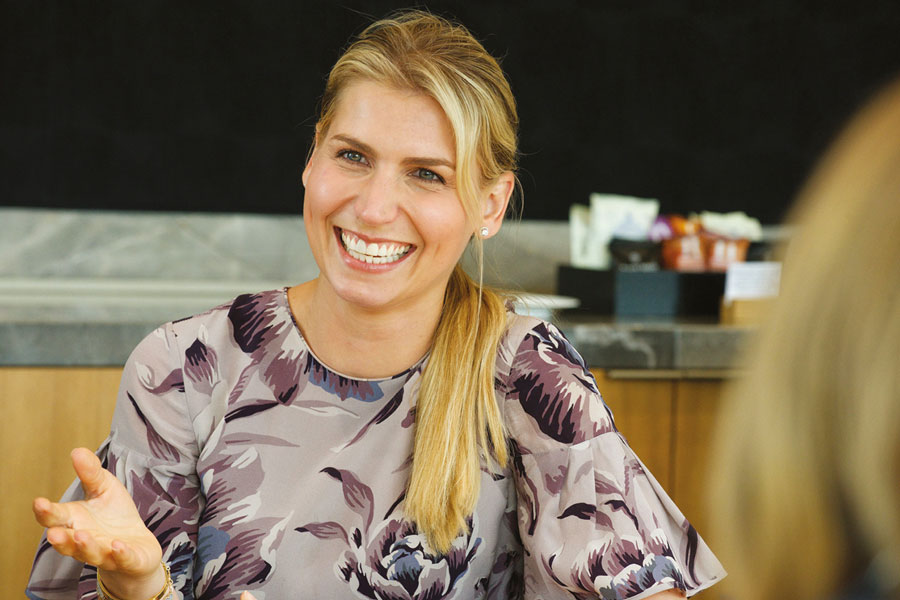
Georgina Flynn: Supporting flexibility
Flynn, who recently came back from maternity leave, has relished the flexibility that this working structure provides. “I’m the one who always comes in in my gym kit,” she laughs. She currently works a four-day week, a structure that has worked well for both her and the desk. “I’ve never seen that contract on another buy-side desk and frankly, when I came into this industry, I never thought it would be possible, but it works brilliantly. I feel I can fully commit to my job and still be present with my kids. It’s a huge differentiating factor.”
“It’s not just about working from home or from the office, it’s about thinking about the actual pattern of the week as well, and what works for everyone as a team,” adds Miller. “Not having to worry about your family means you can bring your A-game to work.”
And while the desk promotes flexible working, this doesn’t come at the expense of wider performance. “There’s always a trader on the floor,” stresses Miller. “There’s always someone the PMs can reach out to talk to, which gives them a degree of comfort.”
A key factor in making the team a success has been the physical location, which was a major change. “We used to be in a separate floor in a glass box, we were completely segregated from the fund manager. Now we sit right in the middle of the investment team and that’s completely changed the conversation,” says Flynn, who sits on the high touch side and specialises in sourcing outside blocks of liquidity. Formerly covering consumer and healthcare, she now covers the industrials and materials sector from micro to mega cap. “I see myself as a liquidity consultant to the PMs. They’re experts in stock selection but we’re the experts in sourcing the liquidity they need – and in knowing when and how to trade it.”
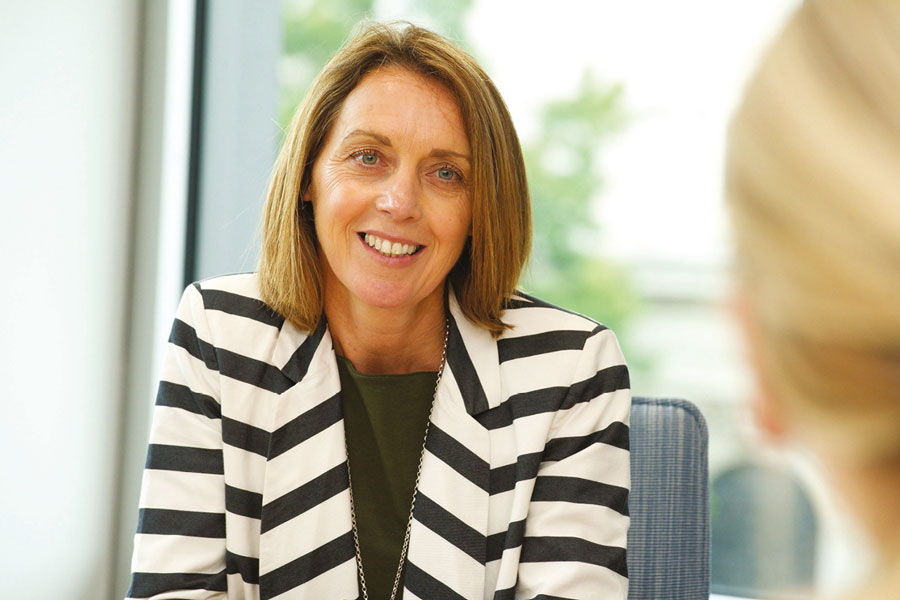
Grainne O’Connor: Structuring information
O’Connor is the mother figure of the group, and the communicator. Coming from a sell-side and hedge fund background she is, like Flynn, a high-touch trader. “I’ve had lots of experience and I can pick up on things quite early. I like posing questions to the team, and making sure that the content we’re talking about is all-inclusive – I like starting debates and our weekly team meetings are really valuable in that regard. It’s about having that feedback so that we can decide the best course of action and deal with any challenges.”
One of the key things she believes differentiates FIL as a desk is their structural distribution of information. The team always issues a morning note to give a recap of what’s happened overnight, then a midday update covering the morning’s thematic activity in Europe and anything coming up in the US, and finally an end of day recap. “In between all of that, the team are also sending out content continuously, which can be bilateral to fund managers on liquidity positioning and execution strategy, or it can be on technical analysis, single stock trade ideas, sector updates, or deep dives on equity positioning or rebalances – just to make sure that the fund manager is aware of liquidity events they should be tapping into to reduce transaction costs,” she explains. “It’s something that every desk has access to, but not every desk will be using. Our team is really proactive on that front.”
The information goes out to the whole investment team, including the sales force who often use points when talking to clients – and it often has a broader reach than they realise. “We sometimes think, well does anyone actually read this, but then the one morning we don’t do it, we’ll get constant enquiries about where it is,” says O’Connor.
“We get a lot of information sent to us and for me, it’s about being that link between the market and the PMs. It’s about cutting through the noise.”
Emmanuel Gbetuwa: Strengthening connections
Gbetuwa, who has been on the equities trading desk for seven years now since coming up from the support team, has found the experience intensely rewarding. “When I first joined the desk, the traders really took me under their wing and showed me things from the ground up. I got a really good grounding not just in how to be the best and the smartest, but in how to really think about trading, and how to approach it from a future-proofing perspective.”
His speciality, outside of trading financials, is equity capital markets and in particular secondary market deals. “I connect to the PMs, gather demand and reflect that back to the street. I work closely with the capital markets team and there has definitely been an evolution throughout the years. A lot of the things that we’re trying to do now focus around automation and how to improve processes – particularly in emerging markets like the MENA region, where there a lot of nuances that we’re trying to find more efficient ways to process.”
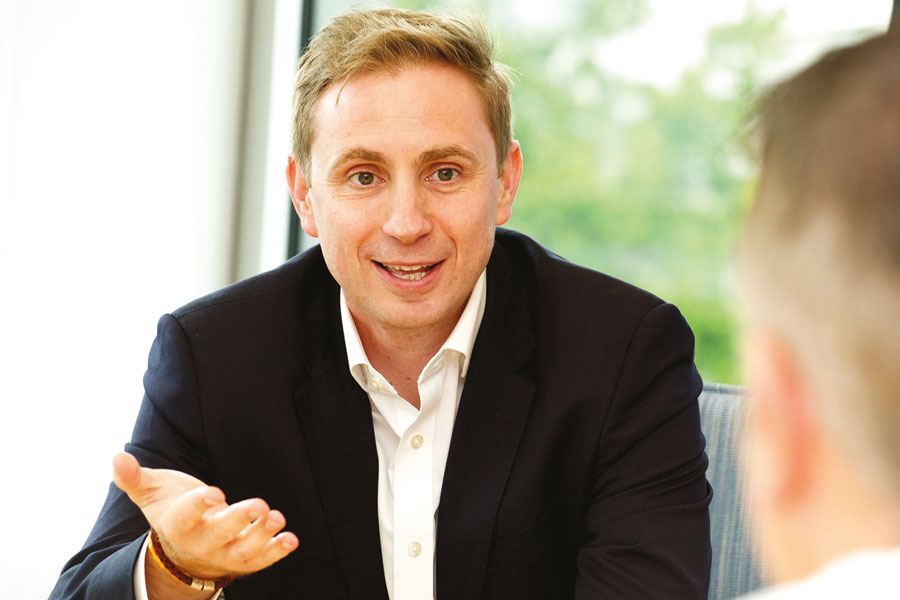
Tom Stevenson: Spreading responsibility
As the leader of the new team, Stevenson manages the desk along flat structural lines – focusing on the ethos rather than the org chart. “The team I worked in before were all excellent traders who taught me everything I know about market etiquette and how to conduct yourself – but this team is different. They leverage their differences, they are really inquisitive and incredibly proactive, and that’s what separates us and allows us to stand out. My role is two-fold. First, to make sure that we are delivering on our best execution obligations to clients, so there is a performance element that I’m laser focused on. But equally, as a people manager, my job is to give people the opportunity and the platform upon which they can do their best work and grow in their careers. Ultimately, that’s always the long-term goal.”
The objective is always scalability, and everyone on the team has the autonomy to focus on their own business areas – which has led to some interesting outcomes.
Standing out through independence
“When I joined Fidelity I was used to the sell-side mentality where you were very micro-managed and you felt like you were on a knife-edge the whole time, so it was a big shift coming here,” reveals Flynn. “When I joined and was told ‘you can run your own business, I’m here to support you’ it was like a breath of fresh air, and a complete revelation to me. That’s what Tom does so well with our team – everyone has so much independence to pursue different interests and specialisations, including projects off the desk that involve different parts of the business. There’s no checking in or getting permission, and I can’t ever recall being told that I can’t do something. It’s very open and collaborative and everyone is allowed space to grow.”
For example, a few years ago Flynn undertook a data clean-up that dramatically improved efficiency. “Essentially the information we were receiving from the street on stocks they were active in was almost 90% inaccurate, just because of the way it was being sent to us. I did a huge clean-up exercise and we used it as a way of identifying which brokers were showing us the best liquidity in which sectors, which helped us as traders. From a data perspective, that led to information our data scientists could mine, and we could look in detail at who we were trading with and why, which then feeds into best execution. That’s a great example of a simple exercise that grew into something much bigger, and now feeds into our broker reviews and day-to-day trading.”
Securing best execution
As an equities desk, best execution is at the foundation of everything they do. “It’s the crucial underpinning,” agrees Stevenson. “Everyone has a responsibility for it, but it’s not a single metric. Best execution for us is all about process. We need to have a demonstrable process that we can show to clients and auditors and that ensures robust oversight. Yes, there is a performance element to it, so we do use third party providers. But we are benchmarking our trades; not our traders.
“I think that’s really important. If you give a trader a benchmark they’ll trade to that benchmark and not necessarily to the right outcome for the client. We have to look at each trade in isolation. That’s what we do through pre-profiling – it may be a systematic execution, for example, but it’s based on data and historic performance. If we don’t think trading quickly is the right thing to do then we won’t do it.
“All our traders are proactive,” stresses Stevenson. “People really want to improve themselves and achieve better outcomes.”
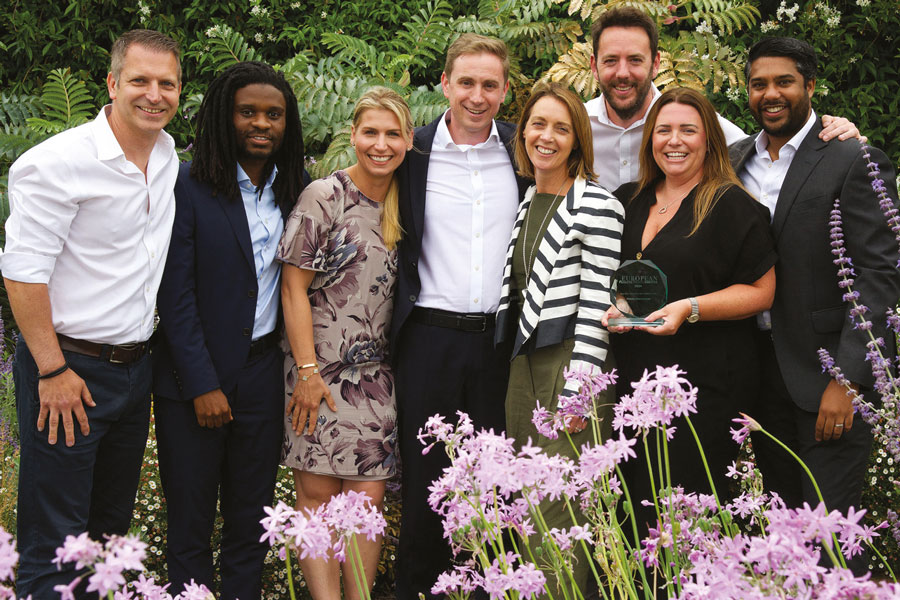
Cross-team collaboration
The desk works very closely with the trading analytics team, which sits independently but feeds data back into all of its processes. On the low touch systematic side the team measures performance of the algorithms they are using against a variety of different benchmarks and then allocates the trades based on that performance. On the high touch side, they use analysis of multiple factors, such as the success of block trades.
And data is the thread that runs through everything. The Trading Analytics team, led by James Anderson, has done some important work in leveraging new data evaluation systems for the trading team.
“We have a lot of data generated through systematic trading which we can utilise to show performance, so a key element is working with the data team to leverage that,” explains Stevenson. “We sit down together monthly and quarterly to look at all the data, where it’s going, review all the different strategies we have in place and so on. Sometimes, a data subset might show that we’re not trading as effectively as we could be, so we can use that to generate better outcomes. We then back-test those new strategies against historical trades, and go through them with the governance team to show them our proposal, and then we build it. That all comes from different teams working together.”
Company-wide synergies
The equity trading desk, which sits within the equity investment team, is part of a global trading team that also includes FX and fixed income. “We’re now trying to leverage use cases from across different asset classes to see where we can improve performance or find synergies to reduce costs,” says Stevenson. “That’s a focus area now, and it’s been a big shift over the last three years. We’re trying to make sure that we don’t just develop something that works for us over here but that might not work for another asset class or that might end up becoming eventually redundant. We need to make sure we’re forward-thinking, so if there is a solution that benefits us in equities, can it benefit the FX team, and vice versa?”
Miller is at the forefront of this, currently working closely with his colleagues in FX and Fixed Income to enhance trading protocols. “We’ve seen the period of intense technological advancement and I think we’re still on the crest of that wave,” he says.
O’Connor agrees that technology has supported huge advancements in efficiency. For example, Vaz recently began a degree apprenticeship in data science, and his latest project has allowed the team to pull source data each morning – saving a substantial amount of time by overriding the former archaic system of manually inputting each individual stock or holding for every fund every day. “It’s so much easier now to decipher what we have to focus on, on a daily basis,” says O’Connor. “It’s probably one of the most efficient tools that we use.”
It’s all about small enhancements, she thinks. “We’re looking at tagging data so that we can mine information to make better decisions. It’s always evolving, and we’re able to use Will’s new-found data science expertise to track liquidity opportunities and demonstrate them to fund managers. It sounds quite simple but actually it’s really hard to get that data, store it and log it. We have a small midcap bias and so TCA can escalate quite quickly when you’re dealing with the lower market cap end of the spectrum. Using this new tool we can be a little more targeted in how we’re showing our fund managers liquidity, getting their responses and logging it all. It’s worked really effectively.”
But there are limits, and the litmus test is always whether it improves performance. AI is a case in point. “We’ve tested Microsoft Co-Pilot and Chat GPT, etc, and we’re always trying to think about ways we can compete for efficiency. But at this stage it’s not so much about how we can use AI in the trading process as how we can use it to be more efficient with the information we have,” cautions Stevenson.
Grabbing the edge
So what makes the FIL equities desk really stand out?
“Our feedback from the Street is that we’re one of the most proactive desks in the City,” says Miller. “We show our flow, we treat our PMs as clients, and we are constantly looking to reduce and minimise the cost of execution.”
“It’s also about our depth of relationships, both internally and externally,” adds O’Connor. “Both of those have to work in order to get the best outcome.”
“Everyone is keen to develop both themselves and the team,” stresses Flynn. “That’s different from other desks. Everyone is always pushing their own projects, generating new content, making decisions. The team has evolved into this wonderful machine that is constantly moving, and none of us are ever sitting still. We are always looking for inefficiencies in the process or improvements in performance that we can solve. We drive so many conversations across the firm – how can we fix this, how can we look beyond the horizon. I’ve never worked on a desk like it.”
“I think a big part of what makes our team stand out is also its diversity,” concludes Gbetuwa. “We all have completely different backgrounds, different educations, but we come together to create a diversity of thought that really lends itself to progress. We have a fundamentally collaborative approach – we might be competitive, but we rarely disagree. People challenge, and they are challenged in return. And everyone laughs at everyone else’s jokes.”
©Markets Media Europe 2024


